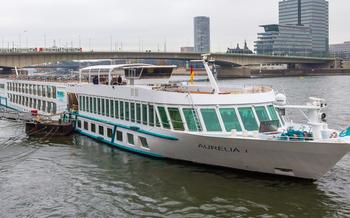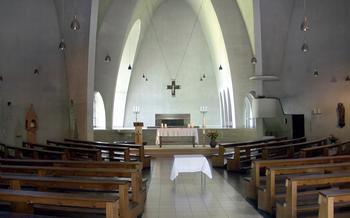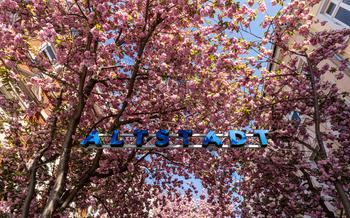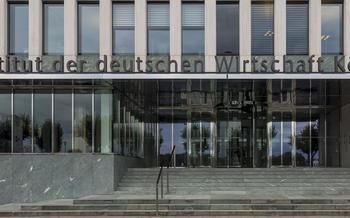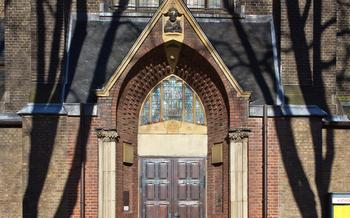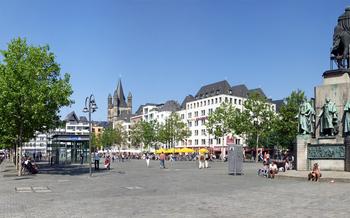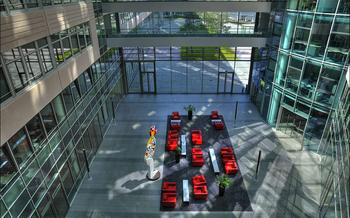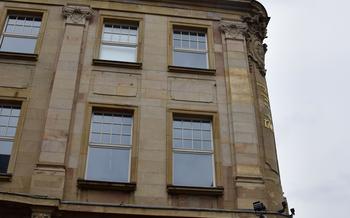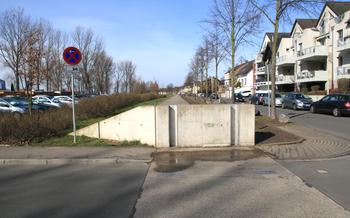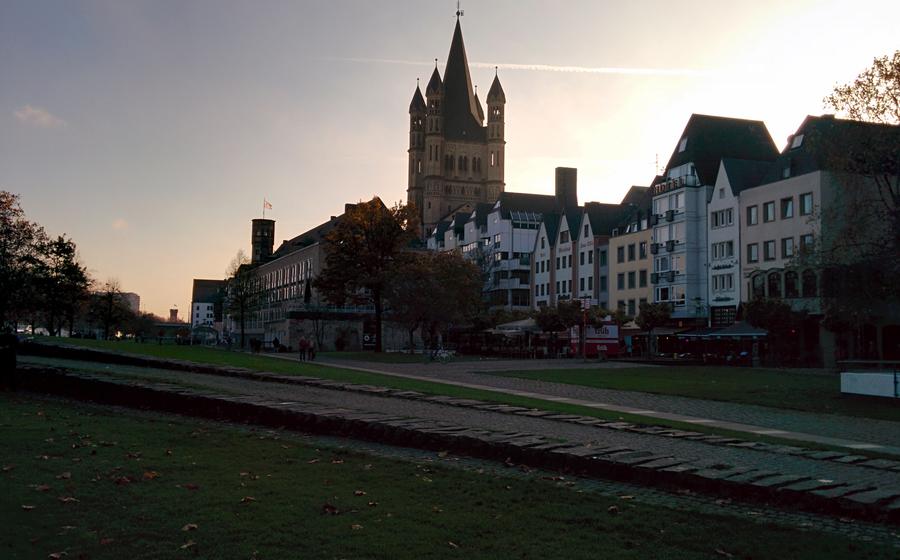
Rhine Promenade
- Historical Significance
- Rhine Promenade: A Stroll Along the Majestic Riverfront
- Cologne Cathedral: A Gothic Masterpiece on the Rhine
- Hohenzollern Bridge: A Railway Masterpiece Transformed into a Pedestrian Haven
- Chocolate Museum: A Sweet Journey into the World of Chocolate
- Ludwig Museum: Modern Art Haven
- Old Town: A Journey Through History and Charm
- River Cruises
- Botanical Garden: A Haven of Natural Wonders
- Cologne Triangle: Architectural Marvel and Panoramic Views
- Street Art and Murals: Cologne's Vibrant Canvas
- Cologne Carnival: Festive Celebration and Public Revelry
- Holocaust Memorial: Remembrance and Education
- Roman-Germanic Museum: Unveiling Ancient History
- Insider Tip: Hidden Gems and Local Experiences
Historical Significance
Cologne's history is a tapestry of ancient grandeur, medieval splendor, and modern transformation. In antiquity, Roman settlements flourished along the Rhine's banks, leaving an indelible mark on the city's culture and architecture. During the Middle Ages, Cologne became a prominent member of the Holy Roman Empire, a hub of trade and commerce, and a center of ecclesiastical power. The city's magnificent cathedral, a testament to its medieval heritage, still dominates the skyline today.
After the devastation of World War II, Cologne underwent a remarkable revival, rising from the ashes to become a vibrant metropolis. This modern transformation saw the construction of architectural marvels like the Cologne Triangle and the Ludwig Museum, blending seamlessly with the city's historic charm. Cologne's rich history is palpable in every corner, from the ancient Roman ruins to the contemporary masterpieces that grace its streets.
Rhine Promenade: A Stroll Along the Majestic Riverfront
The Rhine Promenade, known locally as the Rheinpromenade, is a captivating walkway that stretches along the western bank of the Rhine River in Cologne, Germany. Its origins date back to the 19th century when the city underwent a comprehensive transformation, transforming its medieval fortifications into a scenic riverside promenade.
As you embark on a leisurely stroll along the promenade, you'll be greeted by breathtaking vistas of the Rhine River, its shimmering waters reflecting the vibrant hues of the sky. The promenade offers a front-row seat to the city's iconic landmarks, including the majestic Cologne Cathedral, the Hohenzollern Bridge, and the Chocolate Museum.
The architectural diversity along the Rhine Promenade is a testament to Cologne's rich history. Gothic, Renaissance, and modern architectural styles blend harmoniously, creating a captivating urban tapestry. From the grandeur of the Cologne Cathedral to the contemporary elegance of the Chocolate Museum, each building tells a unique story about the city's past and present.
Cologne Cathedral: A Gothic Masterpiece on the Rhine
Cologne Cathedral, with its soaring spires and intricate Gothic architecture, stands as an iconic landmark and a testament to the city's rich history and cultural heritage. Its construction began in 1248, spanning over 600 years, and was finally completed in 1880. The cathedral's design is a masterpiece of Gothic architecture, characterized by its ribbed vaults, pointed arches, and flying buttresses that create a sense of lightness and height.
The cathedral's grandeur is further enhanced by its impressive dimensions. It is one of the largest Gothic churches in Europe, measuring 144 meters in length, 86 meters in width, and boasting a height of 157 meters. The twin towers, each adorned with intricate carvings and delicate tracery, dominate the skyline and offer breathtaking views of the city.
As a UNESCO World Heritage Site, Cologne Cathedral holds significant cultural and historical importance. It represents the architectural prowess and artistic achievements of the Middle Ages and serves as a symbol of the city's resilience and faith. The cathedral's interior is equally awe-inspiring, featuring a vast nave, intricate stained glass windows, and numerous works of art that reflect the religious and cultural significance of the building.
Hohenzollern Bridge: A Railway Masterpiece Transformed into a Pedestrian Haven
The Hohenzollern Bridge, an iconic landmark spanning the Rhine River in Cologne, Germany, stands as a testament to engineering prowess and architectural beauty. Initially conceived as a railway bridge in the late 19th century, the Hohenzollern Bridge played a crucial role in connecting Cologne with the neighboring city of Deutz. Its sturdy construction and elegant design quickly made it a symbol of the city's industrial and commercial growth.
Architectural Details and Symbolic Sculptures
The Hohenzollern Bridge boasts intricate architectural details that showcase the skill and artistry of its creators. The bridge's massive stone piers, adorned with decorative elements, rise majestically from the river, supporting a series of graceful steel arches. The bridge's railings feature intricate patterns and symbolic sculptures that pay homage to Cologne's history and culture.
Pedestrian Crossing and Panoramic Views
In the 1950s, the Hohenzollern Bridge underwent a significant transformation. With the advent of modern transportation systems, the bridge's railway tracks were removed, and it was converted into a pedestrian walkway. This transformation opened up the bridge to the public, allowing visitors to stroll along its length and admire the stunning panoramic views of the Rhine River, the Cologne Cathedral, and the city skyline.
A Popular Destination for Leisure and Photography
Today, the Hohenzollern Bridge is a beloved destination for both locals and tourists alike. It offers a unique perspective of Cologne's cityscape, providing ample opportunities for photography and sightseeing. The bridge's wide pedestrian walkways make it an ideal spot for leisurely walks, enjoying the fresh air and the tranquil atmosphere of the river.
Whether you're a history buff, an architecture enthusiast, or simply someone who appreciates scenic vistas, the Hohenzollern Bridge is a must-visit attraction in Cologne. Its transformation from a railway masterpiece to a pedestrian haven has given it a new lease on life, ensuring that it remains an integral part of the city's cultural and architectural heritage.
Chocolate Museum: A Sweet Journey into the World of Chocolate
Indulgent Experience: Cologne, renowned for its rich chocolate-making tradition, is home to the captivating Chocolate Museum, a haven for chocolate enthusiasts. Immerse yourself in the sweet history of chocolate, from its ancient origins to its transformation into a beloved delicacy. Discover how cocoa beans, once considered a precious currency, were brought to Europe by Spanish conquistadors, igniting a passion for chocolate that has endured for centuries.
Interactive Exhibits: Embark on an interactive journey through the museum's engaging exhibits. Witness the fascinating process of chocolate making, from harvesting and roasting cocoa beans to grinding, conching, and tempering. Get hands-on experience at interactive stations, where you can grind cocoa beans, create your own chocolate bar, and experiment with different flavors and toppings.
Chocolate Tasting: Indulge your senses with a delectable chocolate tasting experience. Sample a variety of chocolates from around the world, each with its own unique flavor profile. Learn to appreciate the nuances of dark, milk, and white chocolate, as well as specialty chocolates infused with exotic spices and fruits. Discover the art of pairing chocolate with different beverages, creating harmonious flavor combinations that elevate the tasting experience.
Ludwig Museum: Modern Art Haven
Nestled in the heart of Cologne, the Ludwig Museum stands as a testament to the city's vibrant contemporary art scene. Founded in 1976, the museum houses a remarkable collection of modern and contemporary artworks, captivating visitors with its diverse range of exhibits and interactive displays.
The Ludwig Museum's collection boasts masterpieces from renowned pop art icons such as Andy Warhol and Roy Lichtenstein, whose bold and colorful works have revolutionized the art world. Alongside these legendary artists, the museum showcases a diverse array of contemporary masters, including Gerhard Richter, Sigmar Polke, and Joseph Beuys, whose thought-provoking creations challenge conventions and invite contemplation.
In addition to its permanent collection, the Ludwig Museum hosts a dynamic program of temporary exhibitions, featuring emerging artists and exploring cutting-edge themes in contemporary art. These exhibitions provide a platform for new voices and perspectives, fostering a vibrant dialogue between established and emerging artists.
With its captivating collection and engaging exhibitions, the Ludwig Museum offers an immersive journey into the world of modern and contemporary art. Whether you're an art enthusiast or simply seeking a thought-provoking experience, the Ludwig Museum is a must-visit destination in Cologne.
Old Town: A Journey Through History and Charm
Cologne's Old Town, with its captivating cobblestone streets and medieval architecture, offers a glimpse into the city's rich history and enduring charm. Wander through the narrow alleys and admire the beautifully preserved buildings, each with its own unique story to tell.
Among the architectural gems of the Old Town is the Rathaus (City Hall), an impressive Gothic structure that dates back to the 14th century. Its intricate facade, adorned with sculptures and gargoyles, reflects the artistry and craftsmanship of its time.
Another highlight is the Alter Markt (Old Market), a bustling square that has been a center of trade and commerce for centuries. The square is lined with colorful buildings, charming cafes, and shops selling local delicacies.
Don't miss the Heinzelmännchenbrunnen (Fountain of the Elves), a beloved landmark that tells the tale of mischievous elves who helped a cobbler finish his work overnight. The fountain's whimsical design and charming characters capture the imagination of visitors of all ages.
The Old Town is not just a place of historical significance but also a vibrant hub of activity. Its narrow streets are lined with boutiques, galleries, and restaurants, offering a delightful mix of shopping, dining, and entertainment options.
As you stroll through the Old Town, take your time to soak in its unique atmosphere. The lively buzz of the streets, the friendly smiles of the locals, and the aroma of freshly baked pastries create a magical experience that will stay with you long after your visit.
River Cruises
Cologne's picturesque cityscape, with its soaring spires, elegant bridges, and bustling waterfront, is best admired from the tranquil waters of the Rhine. A variety of river cruises offers a unique perspective on the city's landmarks. From leisurely sightseeing tours that glide past iconic sights like the Cologne Cathedral and the Hohenzollern Bridge to enchanting dinner cruises that provide a romantic ambiance under the starry sky, there is a cruise to suit every preference.
Panoramic Views
River cruises provide unparalleled panoramic views of Cologne's architectural marvels. As the boat gently navigates the river, passengers can admire the grandeur of the Cologne Cathedral, its twin spires piercing the sky like celestial beacons. The Hohenzollern Bridge, with its intricate steelwork and graceful arches, presents a stunning spectacle, especially when illuminated at night. The cruises also offer glimpses of the Old Town's charming medieval streetscapes, the modern skyscrapers of the Innenstadt (city center), and the verdant parks that line the riverbanks.
Historical Commentary
Most river cruises offer informative commentary that enhances the sightseeing experience. Passengers can learn about Cologne's rich history, its cultural heritage, and the significance of the landmarks they pass. The commentary provides insights into the city's Roman origins, its medieval grandeur as a free imperial city, and its transformation into a modern metropolis. Visitors can also learn about the city's role in the arts, music, and literature, and its contributions to German culture.
Botanical Garden: A Haven of Natural Wonders
Cologne's Botanical Garden invites nature enthusiasts to immerse themselves in a verdant haven of botanical wonders. Established in 1864, the garden has grown into a vast expanse of over 11 hectares, housing an impressive collection of plants from around the world.
Stroll through the Thematic Gardens, each designed to showcase a specific theme or region. Marvel at the vibrant colors of the Rose Garden, inhale the sweet fragrance of the Medicinal Garden, and find serenity in the tranquil Japanese Garden.
Delve into the garden's educational offerings through workshops, guided tours, and interactive exhibits. Learn about the fascinating world of plants, their medicinal properties, and their ecological significance.
The Botanical Garden is not just a place of beauty but also a center for research and conservation. Its dedicated team of botanists and horticulturists work tirelessly to preserve endangered species, conduct scientific studies, and promote sustainable practices.
Whether you seek a tranquil retreat, an educational experience, or simply a chance to admire nature's splendor, the Botanical Garden offers a delightful escape for visitors of all ages.
Cologne Triangle: Architectural Marvel and Panoramic Views
Cologne Triangle, an architectural masterpiece located in the heart of Cologne, stands as a testament to innovation and engineering prowess. Its unique design, resembling an inverted pyramid, captivates visitors with its sleek and modern appearance. The 103-meter-tall structure, completed in 2006, has become an iconic landmark that has transformed the city's skyline.
The Cologne Triangle's most striking feature is its innovative construction. Designed by the renowned architects Ingenhoven Architekten, the building boasts a steel skeleton that forms a diagrid structure. This unique design not only provides structural stability but also creates a visually appealing facade with a pattern of interlocking triangles. The exterior is clad in glass panels, allowing for an abundance of natural light and offering panoramic views of the surrounding cityscape.
Visitors to the Cologne Triangle can ascend to the observation deck via a high-speed elevator, which offers a thrilling experience in itself. The observation deck, situated at a height of 95 meters, provides breathtaking 360-degree views of Cologne and its surroundings. From here, visitors can admire the city's landmarks, including the majestic Cologne Cathedral, the meandering Rhine River, and the lush greenery of the surrounding parks.
In addition to its stunning views, the Cologne Triangle also hosts cultural exhibitions, events, and conferences. The building's versatile spaces can accommodate a variety of gatherings, from intimate seminars to grand receptions. The Cologne Triangle's unique ambiance and panoramic backdrop make it an ideal venue for special occasions, offering guests an unforgettable experience.
Street Art and Murals: Cologne's Vibrant Canvas
Cologne has emerged as a vibrant hub for street art and murals, showcasing the city's artistic energy and cultural diversity. These colorful creations adorn the walls of buildings, alleyways, and bridges, transforming the urban landscape into a living canvas.
From the trendy Ehrenfeld district to the historic Belgian Quarter, street art enthusiasts can embark on a captivating journey to discover hidden masterpieces. Each mural tells a unique story, reflecting the artist's perspective on social issues, politics, or simply their imagination.
To delve deeper into the world of Cologne's street art, guided tours are available. These tours provide insights into the artists' techniques, the history of the movement, and the cultural significance of these urban expressions.
Whether you're an art aficionado or simply seeking a creative adventure, Cologne's street art scene offers a captivating experience that celebrates the city's artistic spirit. Embrace the vibrant colors, thought-provoking messages, and the raw energy that pulsates through these urban masterpieces.
Cologne Carnival: Festive Celebration and Public Revelry
The Cologne Carnival, known locally as "Karneval," is an integral part of the city's cultural identity and a cherished tradition that dates back to the Middle Ages. This annual celebration, held in February or March, transforms Cologne into a vibrant and jubilant city, filled with laughter, music, and colorful festivities.
The highlight of the carnival is the grand parade, which takes place on the Monday before Ash Wednesday. Thousands of participants, dressed in elaborate costumes and representing various groups and organizations, march through the city streets, showcasing their creativity and humor. The parade is a spectacle of music, dance, and satire, and it draws immense crowds of spectators who come to witness this unique spectacle.
Another essential aspect of the carnival is the "Weiberfastnacht," or Women's Carnival, which takes place on the Thursday before Ash Wednesday. On this day, women take over the city, symbolically cutting off men's ties and asserting their power. This tradition dates back to the 19th century when women were not allowed to participate in the carnival.
The Cologne Carnival is not just a celebration but also a public holiday, allowing residents and visitors alike to participate in the festivities. The city comes alive with music, dancing, and merriment, and the streets are filled with joyous revelers. Whether you join the parades, attend costume parties, or simply soak up the festive atmosphere, the Cologne Carnival is an unforgettable experience that captures the essence of this vibrant city.
Holocaust Memorial: Remembrance and Education
In the heart of Cologne stands a poignant memorial dedicated to the victims of the Holocaust, a somber reminder of the city's dark past during World War II. The Holocaust Memorial, inaugurated in 1997, serves as a place of remembrance, education, and reflection, honoring the memory of those who suffered and perished during the Nazi regime.
Designed by architect Gunter Demnig, the memorial consists of eleven concrete blocks arranged in a grid-like pattern, representing the systematic and dehumanizing nature of the Holocaust. The blocks, varying in height, symbolize the diversity of the victims, from children to adults, and their individual fates.
The memorial's simplicity and stark design evoke a sense of isolation and vulnerability, encouraging visitors to contemplate the horrors of the Holocaust and the profound loss of human life. Engraved on each block are the names of Cologne's Jewish citizens who were deported and murdered during the Nazi era, a testament to their identities and the tragic events that unfolded.
Guided tours of the Holocaust Memorial are available, providing historical context and insights into the experiences of the victims. Visitors can learn about the rise of Nazism, the implementation of anti-Semitic policies, and the systematic extermination of Jewish people across Europe. The memorial serves as a powerful reminder of the devastating consequences of intolerance, hatred, and prejudice, and encourages visitors to stand against all forms of discrimination and injustice.
Roman-Germanic Museum: Unveiling Ancient History
Cologne's Roman past is a rich and fascinating chapter in its history, and the Roman-Germanic Museum stands as a testament to this heritage.
-
Archaeological Treasures: The museum houses an impressive collection of Roman artifacts, including mosaics, sculptures, pottery, and tools, providing a glimpse into the daily lives and cultural practices of Cologne's ancient inhabitants.
-
Interactive Displays: To enhance the visitor experience, the museum features interactive exhibits and multimedia presentations that bring history to life. Visitors can explore virtual reality tours, view 3D models of Roman buildings, and learn about the city's transformation through interactive timelines.
-
Guided Tours: Guided tours are available for visitors who wish to delve deeper into the museum's collection and gain insights into the significance of the artifacts. These tours provide historical context and expert commentary, helping visitors to understand the Roman era's impact on Cologne's development.
Insider Tip: Hidden Gems and Local Experiences
Cologne offers a treasure trove of hidden gems and unique experiences that lie beyond the typical tourist trail. For those seeking an authentic taste of the city, here are some insider recommendations:
-
Off-the-Beaten-Path Attractions: Explore the lesser-known sights of Cologne, such as the Melaten Cemetery, with its eerie charm and beautiful sculptures, or the Claudius Therme, a well-preserved Roman bathhouse.
-
Local Cuisine: Indulge in Cologne's culinary delights at traditional restaurants like Früh am Dom, serving hearty German fare, or visit the Heumarkt, a vibrant square lined with charming cafes and beer gardens.
-
Best Time to Visit: While Cologne is lovely year-round, the best time to visit is during the spring (April-May) or autumn (September-October) when the weather is pleasant and the crowds are smaller.
Remember, these insider tips will help you uncover the true essence of Cologne, offering a glimpse into its rich history, vibrant culture, and local traditions.
